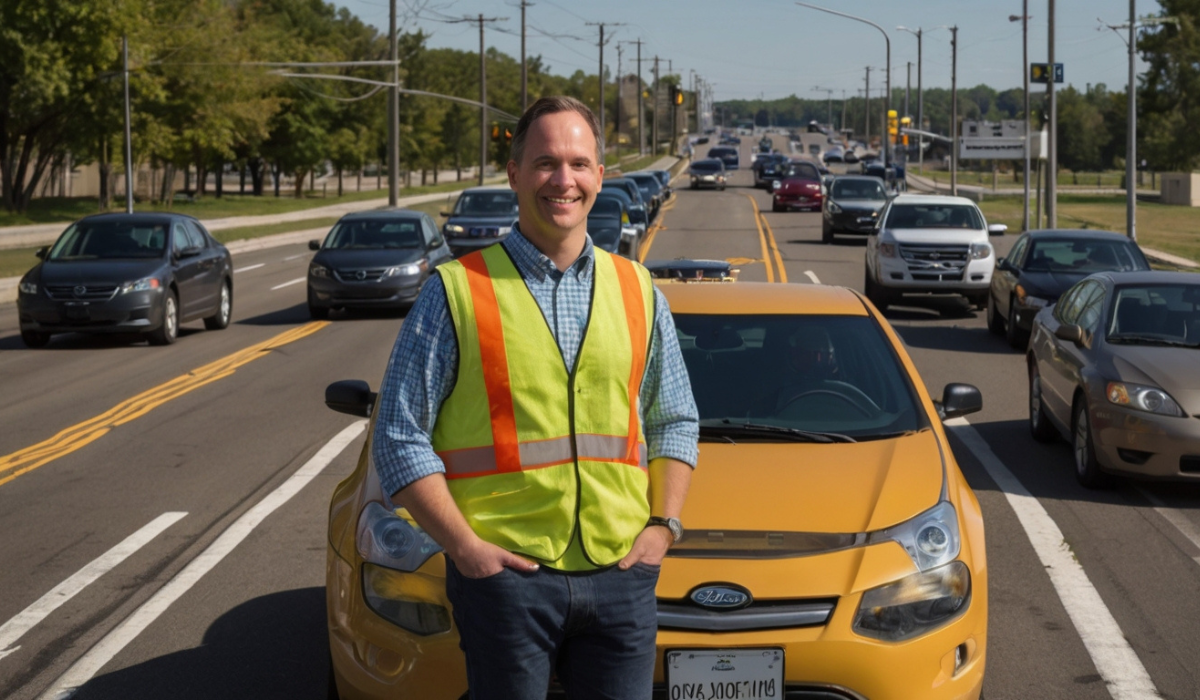Patrick Mahedy ODOT: Driving Innovation, Sustainability, and Public Safety
Introduction
Few names resonate as strongly regarding public infrastructure and transportation management as Patrick Mahedy. A dedicated professional with years of experience, Patrick Mahedy has played a pivotal role in the success of the Ohio Department of Transportation (ODOT). His career is a testament to his vision, innovation, and steadfast commitment to public service, shaping a more connected and sustainable Ohio.
From revitalizing critical infrastructure to integrating cutting-edge technology, Mahedy’s contributions have profoundly impacted the physical landscapes of Ohio and the communities he serves. This post will explore his achievements, approach to modern transportation challenges, and the lessons leaders can draw from his work.
What Is the Ohio Department of Transportation (ODOT)?
The Ohio Department of Transportation (ODOT) is a critical government agency managing over 43,000 miles of highways and nearly 14,000 bridges. Its mission goes beyond merely overseeing roadways. It ensures the safe, efficient movement of people and goods across the state.
This monumental responsibility requires leaders who don’t just adapt to change but actively drive innovation. Under the stewardship of professionals like Patrick Mahedy, ODOT has evolved from a functional agency to a symbol of sustainability, efficiency, and visionary planning.
Highlights of ODOT’s mission include:
- Public Safety: Ensuring secure roadways to reduce accidents.
- Innovation in Transportation: Adopting innovative technologies to improve traffic systems.
- Community Engagement: Collaborating with stakeholders to meet community needs.
- Sustainability Goals: Advocating eco-friendly practices in all projects.
Patrick Mahedy’s work aligns seamlessly with these goals, positioning him as one of ODOT’s most significant assets in its quest for progress.
Patrick Mahedy’s Role in Elevating ODOT’s Impact
At the core of Mahedy’s work is a relentless drive to enhance connectivity and public safety. His leadership is marked by strategic thinking, fostering innovation, and advancing key projects that leave a lasting imprint on Ohio’s infrastructure.
A Portfolio of Transformative Projects
Mahedy’s contributions span numerous impactful projects reflecting his dedication to enhancing lives, improving safety, and promoting sustainability. Some of his most notable achievements include:
- Modernizing Aging Infrastructure: Mahedy spearheaded initiatives to revitalize Ohio’s aging bridges and roadways, ensuring they meet safety standards while extending their life spans.
- Smart Transportation Systems: Patrick has redefined transportation efficiency by championing the integration of Artificial Intelligence (AI) and the Internet of Things (IoT) into Ohio’s traffic systems. These systems reduce congestion and improve accident response times.
- Sustainable Transportation Solutions: His projects often emphasize cutting emissions and energy-efficient design. For example, promoting electric vehicle (EV) infrastructure is key to his vision for a greener Ohio.
Championing Community-Driven Leadership
Beyond his contributions to infrastructure and technology, Mahedy has prioritized collaboration. By fostering open communication channels with local communities, policymakers, and industry experts, he has ensured that ODOT’s projects address the real needs of Ohio citizens.
Promoting Ethics and Mentorship
One of the lesser-discussed facets of Mahedy’s career is his commitment to ethics and mentorship. Patrick believes in empowering rising talent and making mentorship a core pillar of his leadership. His transparency and ethical decision-making have earned him admiration within and outside ODOT.
Key Lessons from Patrick Mahedy’s Leadership Philosophy
Patrick Mahedy’s success isn’t just about the projects he’s delivered. It’s about how he approaches his work. Here are some critical takeaways from his leadership philosophy:
1. Adopt a Forward-Looking Vision
Mahedy’s ability to think long-term has allowed him to champion projects that address future challenges. Leaders at any level can benefit from considering how their decisions will impact their organizations years later.
2. Leverage Technology for Positive Change
Mahedy’s commitment to innovation, such as using AI in transportation systems, underscores how technology can solve complex problems. Organizations and leaders should assess how emerging technologies can add value to their operations.
3. Build Consensus Through Collaboration
Collaboration is central to Mahedy’s work, whether engaging communities or aligning with policymakers. Building consensus ensures that goals are met with substantial support and shared enthusiasm.
4. Lead with Empathy and Ethics
By placing ethics and empathy at the forefront, Mahedy has gained the trust of his peers, colleagues, and the public. His approach highlights the importance of integrity for any leader aspiring to create lasting results.
5. Stay Adaptable
The transportation landscape constantly evolves, and Mahedy’s flexibility enables him to lead in rapid change. Businesses and leaders benefit immensely from staying adaptable to shifting trends or challenges.
The Role of Technology in Modernizing Transportation Systems
One of the most inspiring aspects of Patrick Mahedy’s leadership lies in his ability to harness technology. Whether autonomous vehicles or predictive traffic management, he has embraced digital tools to position Ohio as a trailblazer in modern infrastructure.
A. AI and IoT Integration
Mahedy has actively driven the adoption of AI and IoT in ODOT. These technologies enable:
- Bright Traffic Lights: Adjusting signal timing based on real-time traffic conditions.
- Predictive Maintenance: Using sensors to predict when bridges and roads need repairs, reducing downtime and costs.
- Optimized Traffic Flow: Collecting and analyzing data to reduce congestion and improve commuter experiences.
B. Electric Vehicle (EV) Infrastructure
Mahedy is preparing Ohio for the rise of electric vehicles through initiatives to expand EV charging networks. His efforts reduce reliance on fossil fuels, contributing to the state’s long-term environmental goals.
C. Green Building Practices
For projects big and small, Mahedy has advocated for environmentally friendly materials and energy-efficient designs to reduce the carbon footprint of ODOT’s projects.
A Legacy Beyond Roads and Bridges
Patrick Mahedy’s contributions to ODOT extend far beyond visible infrastructure. By improving transportation ecosystems, fostering trust within communities, and leveraging innovation, Mahedy has established a leadership model that resonates on multiple levels.
His legacy lies not just in the bridges built or highways paved but in the lives connected, opportunities created, and a brighter future imagined for the people of Ohio.
Mahedy’s journey is an influential blueprint for those aspiring to lead with a similar purpose. His vision for sustainability, progress, and collaboration sets a standard worth emulating.
The road ahead is bright, and with leaders like Patrick Mahedy odot, the future grows even more colorful.
Short FAQs patrick mahedy odot
Q1. Who is Patrick Mahedy?
A. Patrick Mahedy is a dedicated transportation and infrastructure leader at the Ohio Department of Transportation (ODOT), known for innovation and sustainable practices.
Q2. What is ODOT?
A. The Ohio Department of Transportation is a government agency responsible for managing over 43,000 miles of highways and nearly 14,000 bridges and ensuring safe traffic systems throughout Ohio.
Q3. What innovations has Mahedy brought to ODOT?
A. Mahedy has integrated AI, IoT, and green building practices into ODOT projects, spearheaded modernization efforts, and fostered EV infrastructure growth.
Q4. How has Mahedy impacted Ohio communities?
A. Through collaboration and a focus on public safety, Mahedy has strengthened local communities by delivering infrastructure projects that meet real needs.
Q5. What leadership lessons can we learn from Patrick Mahedy?
A. Leaders can learn from Mahedy’s forward-thinking vision, commitment to ethics, use of technology, and collaborative approach to creating meaningful change.




Post Comment